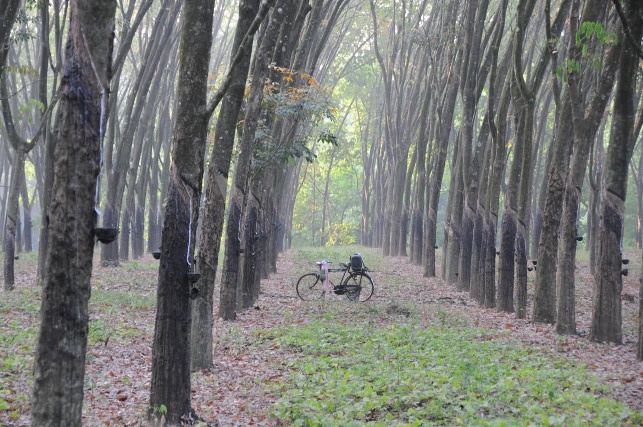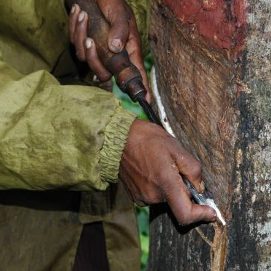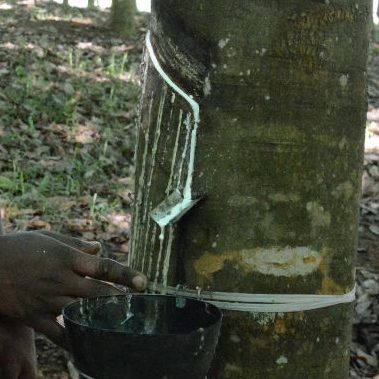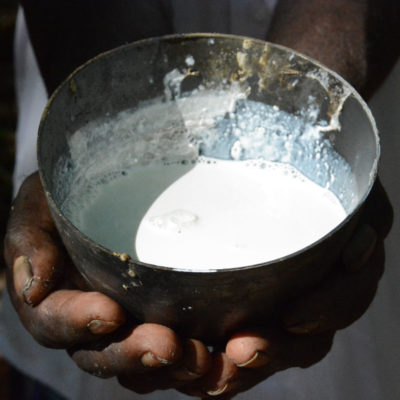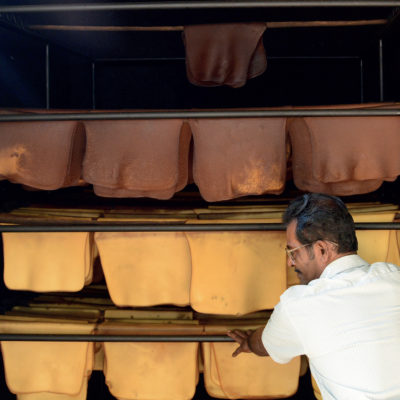The first harvest is possible in the 5th to 7th life years of a rubber tree, after that it produces rubber sap known as latex milk for 25 to 30 years. The rubber tappers use special knives to scratch the tree’s bark diagonally and catch the sap in little cups. The scratching usually takes place in the early morning when the latex milk flows easily. It has to be treated to prevent it from perishing, like cow milk. For this purpose ammonia is added. Tis liquid end centrifuged latex (Cenex) is the basis for all dipped products (e.g. baloons, gloves, condoms). In order to obtain solid rubber the latex milk is coagulated by adding formic or acetic acid and the water is squeezed out. The resulting raw material is dried, either with hot air or over fire. These intermediate products are called Pale Light Crepe (PLC) and Ripped Smoked Sheet (RSS). The sheets and crepes vary in quality depending on the rubber tree and the processing methods. For example the dark sole of a sneaker is made of RSS, the light rubber parts of PLC and Cenex is used as glue.
In Brazil natural rubber is still collected in the jungle. But this extractivist form can be ignored compared to plantation economy. The vast majority of plantations is run by small scale farmers, either on their own or with the help of employed rubber tappers. The far smaller part are large scale plantations often owned by tyre companies.
We get the natural rubber for our GREEN&FAIR products from the Fair Rubber Association. Thereby is guaranteed that the natural rubber is fair traded – the producers receive a Fair Trade Premium of 0,50€/kg DRC (Dry Rubber Content) in addition to the fix selling price. Furthermore all plantations are certified according to FSC® standards. The Forest Stewardship Council® certifies sustainable forestry and plantation cultivation – sustainable in a ecological, social and economocal sense. This includes transperancy of management, acknowledgement of the rights of forest workers as well as of indigenous and local populations, efficient use of the forest in the long term, preservation of biodiversity and ecosystems, no clear cutting, no use of chemicals. (more information www.fairrubber.org, www.fsc.org)
